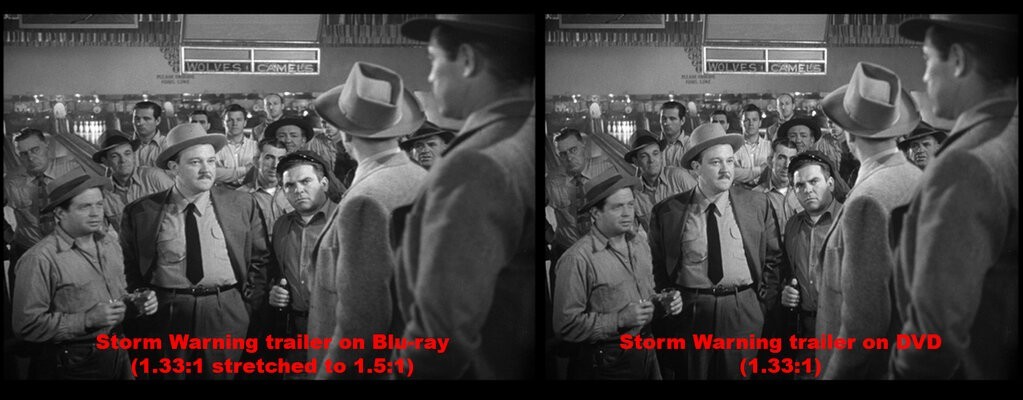Will Krupp
Senior HTF Member
Let me start by saying that a blu-ray disc is no place to be watching standard definition content in the first place as it's always interlaced on any blu-ray disc. If there's SD content you're fond of, you're much better off watching it on DVD, always. I bring this up only because, historically, WAC has ported SD extras directly over to blu-ray and they look inferior even under the best of circumstances.
Getting back to the issue at hand, however, I popped in Flamingo Road. WAC has kept some of the legacy material in SD and some they've upscaled to HD and some has been remastered. There seems to be no rhyme nor reason to it. "Curtain Razor" (Looney Tunes) is a fresh HD remaster with no stretching at all. The "Crawford at Warner" doc is stretched and remains in SD, while both "Breakdowns" and the trailer have been upscaled to 1080p, yet "Breakdowns" is stretched and the trailer (while windowboxed and displaying every interlaced artifact known to man) isn't.
I just can't get worked up over it because if I'm really partial to a specific extra that I need to look as good as it can (which happens almost never) I keep the DVD
I would take that with a grain of salt as specific players might display "Crawford at Warners" correctly, but the two upscaled extras are already encased in a pre-set 16:9 frame so there's really no "other way" for them to display.
Getting back to the issue at hand, however, I popped in Flamingo Road. WAC has kept some of the legacy material in SD and some they've upscaled to HD and some has been remastered. There seems to be no rhyme nor reason to it. "Curtain Razor" (Looney Tunes) is a fresh HD remaster with no stretching at all. The "Crawford at Warner" doc is stretched and remains in SD, while both "Breakdowns" and the trailer have been upscaled to 1080p, yet "Breakdowns" is stretched and the trailer (while windowboxed and displaying every interlaced artifact known to man) isn't.
I just can't get worked up over it because if I'm really partial to a specific extra that I need to look as good as it can (which happens almost never) I keep the DVD
this is strange pple are posting it plays fine on their players
I would take that with a grain of salt as specific players might display "Crawford at Warners" correctly, but the two upscaled extras are already encased in a pre-set 16:9 frame so there's really no "other way" for them to display.
Last edited:







